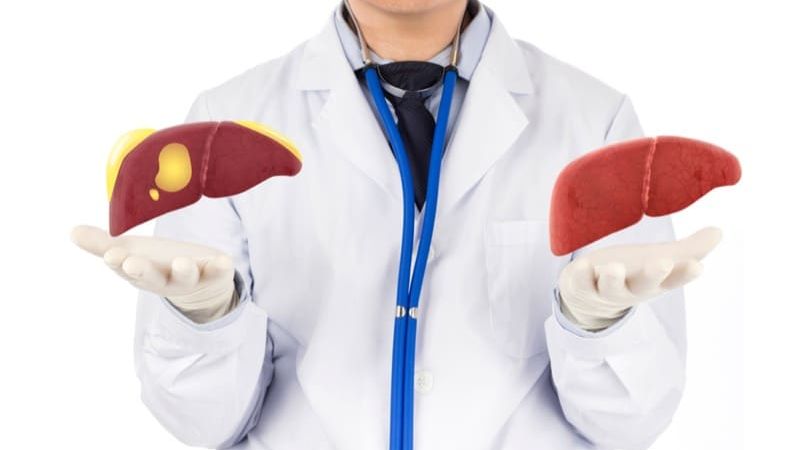

Our Review Process
Our articles undergo extensive medical review by board-certified practitioners to confirm that all factual inferences with respect to medical conditions, symptoms, treatments, and protocols are legitimate, canonical, and adhere to current guidelines and the latest discoveries. Read more.
Our Editorial Team
Shifa Fatima, MSc.
Author
Dr. Apoorva T, MHM.
MEDICAL ADVISOR
Diabetes And Fatty Liver
Fatty Liver is the accumulation of fat in the liver, caused by a buildup of fat in the body; the cause of which is Not related to alcohol consumption. The medical term for Fatty Liver is Nonalcoholic Fatty Liver Disease (NAFLD) While it’s normal and healthy for the liver to contain some fat, if more than 5 to 10 percent of the liver’s weight is fat, it’s called a fatty liver, also known as steatosis
Table of Contents
Risk Factors for NAFLD
Some conditions that may increase the risk of developing NAFLD include
- Being Overweight : Obesity or BMI, of 25 or over is associated with NAFLD
- Large Waist Circumference : A waist circumference of 35 inches and more is a predictor of complications of NAFLD
- Type 2 Diabetes : Two out of three people with type 2 diabetes have NAFLD.
- Dyslipidemia : High triglyceride levels and low levels of the “good” cholesterol, called high-density lipoprotein (HDL), are common in people with NAFLD.
- High Blood Pressure : Hypertension or high blood pressure is associated with a higher risk of developing NAFLD
- Ageing : The incidence of fatty liver increases with age, with higher prevalence seen between ages 40 and 49 for men, and between ages 60 and 69 for women.
What Are the Symptoms of NAFLD?
Many people with NAFLD don’t have any symptoms at all. If symptoms are present, they can include
- Fatigue
- Weakness
- Weight loss
- Loss of appetite
- Nausea
- Abdominal pain
Diagnosis of NAFLD
The primary tests to diagnose Fatty Liver are simple Blood Tests done to assess Liver Function.
If those results are abnormal, it is followed up with imaging studies of the liver using Ultrasound, CT (Computerized Tomography) Scan, or an MRI (Magnetic Resonance Imaging).
A device called Fibroscan, which is similar to Ultrasound, may also be used to assess the amount of scarring, or fibrosis, in the liver.

Management of NAFLD
The best treatment for NAFLD is weight loss. If you’re obese, losing weight by making healthy food choices,and being active engaging in physical activities h reduce the amount of fat and inflammation in your liver, which can helps in reversing or slowing down the progression of the condition.
Some Recommendations of Good Practices are
- Losing 7 to 10 percent of your body weight by cutting calories and carbohydrates
- Consuming 800 units of vitamin E daily
- Aerobic exercise for 30 minutes, at least three times per week
- Stop alcohol and smoking
- Keeping a control on your glucose levels
NAFLD and type 2 diabetes mellitus (T2DM) are known to frequently coexist and act in tandem to increase the risk of adverse clinical outcomes. T2DM is one of the strongest risk factors for the faster progression of NAFLD and vice-versa where NAFLD is results in a twofold higher risk of developing T2DM, irrespective of obesity and other common metabolic risk factors. Having Fatty Liver makes it harder to control fasting glucose levels, making you more resistant to insulin, straining the pancreas and beta cells thus speeding up the arrival of type 2 diabetes. Weight loss is highly beneficial in this regard to start reducing liver fat thus reducing the inflammation that is so closely connected to insulin resistance.
A loss of 5 percent of body weight is enough to , and just a few percentage points more begin reducing the inflammation that is so closely connected to insulin resistance.
The key to reversing the course of fatty liver disease is weight loss. “Reduce carbohydrates, and that reduces fat in the liver very quickly,” Cusi says. A loss of 5 percent of body weight is enough to start reducing liver fat, and just a few percentage points more begin reducing the inflammation that is so closely connected to insulin resistance. “If you start losing weight,” Cusi says, “a lot of things get better.”
If there’s fat in your liver, think very seriously about lifestyle changes, and talk with your doctor about whether vitamin E supplements or pioglitazone [Actos] is right for you,” he adds, noting that pioglitazone is approved only for patients with type 2 diabetes.
Type 2 diabetes, high blood pressure, and a large waistline all put you at risk of this common liver disease. Also know can diabetes be reversed.
Disclaimer
This website's content is provided only for educational reasons and is not meant to be a replacement for professional medical advice. Due to individual differences, the reader should contact their physician to decide whether the material is applicable to their case.
More by Shifa Fathima

अर्जुनरिष्ट के फायदे, खुराक और नुक्सान

मधुमेह के लिए मधुनाशिनी वटी: उपयोग, लाभ, खुराक और दुष्प्रभाव|

मधुमेह को नियंत्रित करें भारतीय आहार से





